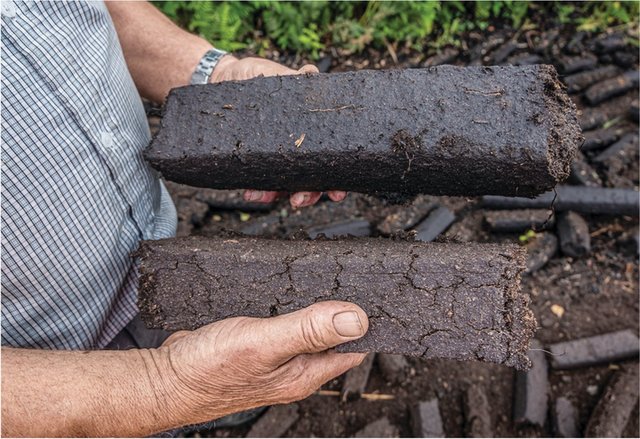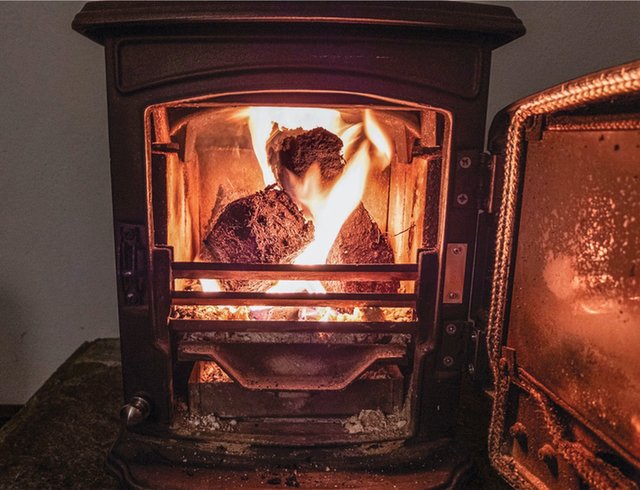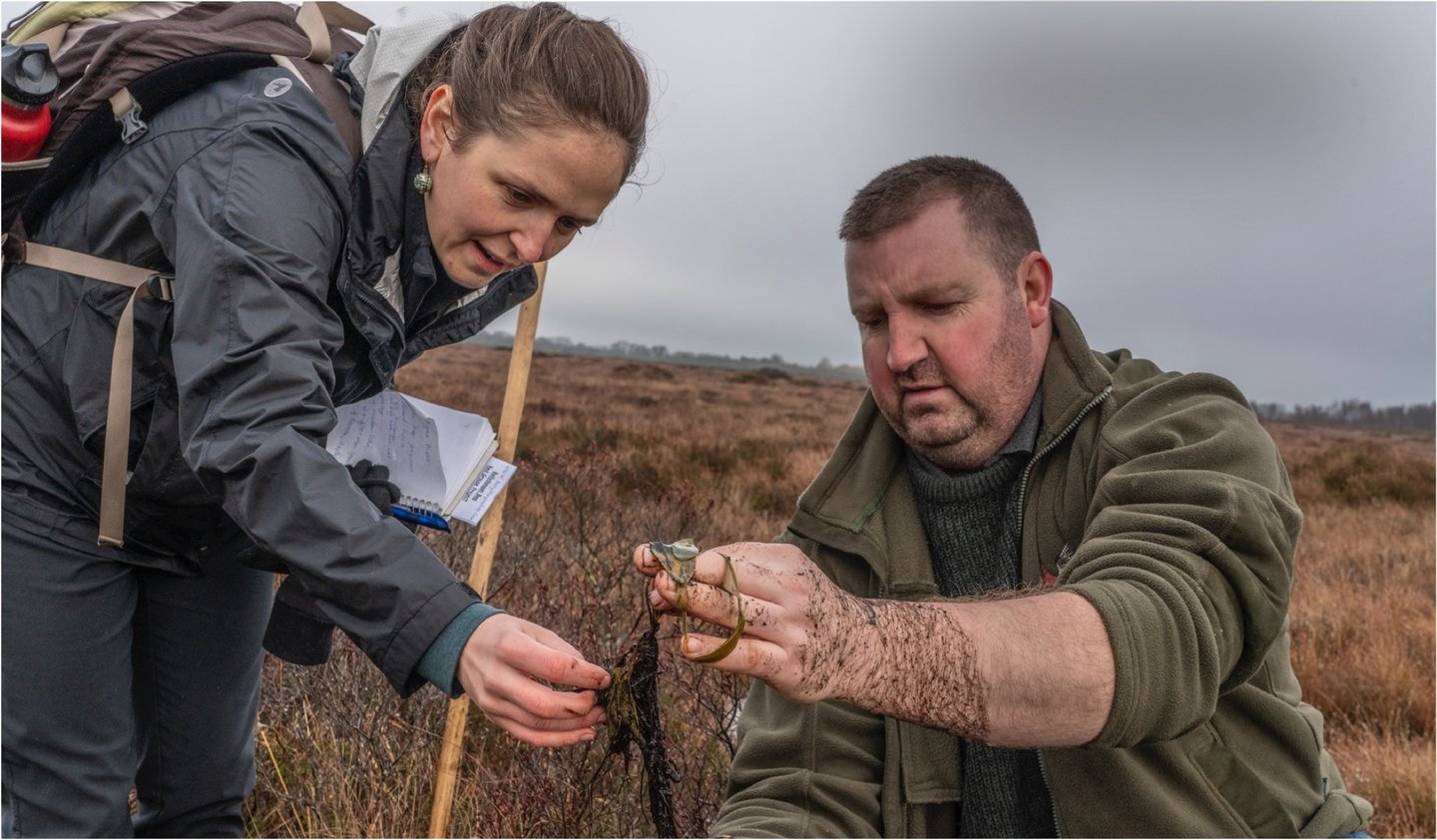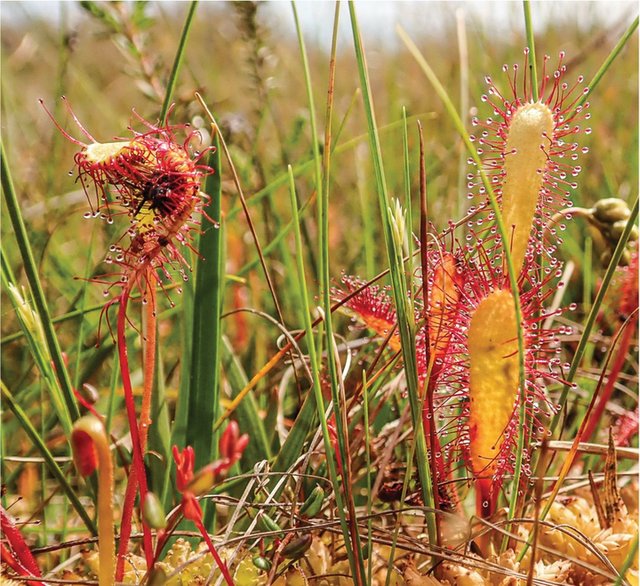
Oncethepeatiscutanddried,itcanbeburnedas fuel.
PowerSource
PeopleinIrelandhaveusedpeatforfuelforcenturies.Familiesusedsimpletoolstocutbrick-shapedblocksofpeatsoilfromthebog.Theylaidthebricksoutacrossthegroundtodryinthebreezeandsummersun.Whendried,peoplecartedthepeathome.Theyburnedtheselargestockpilesduringwintertowarmtheir homes.
Inthelasthundredyears,thatharvesthasmovedfromsimpletoolstolargermachines.Inadditiontousingpeatathome,Irelandbeganburningmillionsoftonsofpeateachyearinpowerplantstogenerateelectricity.Today,nearlyeightpercentofIrishelectricityisgeneratedbyburningpeat,andmorethan70,000 householdsstillusepeattoheattheir homes.
WhilethisisanimportantpartofcultureandtheIrisheconomy,itisalsoreleasingthousandsofyearsofstoredcarbonintotheatmosphere.Whencarbonreenterstheatmosphereascarbondioxide,itfurtherwarmsourplanet.Thenbogsbecomecarbonsources,notcarbonsinks.Peatisafossilfuel,butaninefficientone.Peatisactuallyworsethanotherfossilfuelsintermsofcarbonemissions.Burningpeatforfuelemitsmorecarbonthancoaldoes.Yet,itproduceslessheatorelectricity.Comparedtonaturalgas,peatreleasestwicetheamountofcarbon dioxide.

Amanstacksbricksofpeatto dry.

SomeIrishhomesarestillwarmedbypeat fires.
Lawsto
ProtectPeat
In2019,theIrishgovernmentmadeaclimateactionplan.Itcalledforreducingcarbonemissionstoprotectpeatlands.However,itisdifficulttoaskpeopletochangetheirwayoflife,especiallyifithasbeenpartoftheirculturefor generations.
Peoplewhousepeattoheattheirhomesoftenhaveadeeploveforthefiresitmakestowarmtheirhomes.Burningsomethingelse,saysMaryLeybourneinCloghan,Ireland,justwouldn’tfeelthesame.Shelovesthesmellofthesefires.“Itbringsyoubacktotheolddays,”she says.
Peatisalsoacheapfuelsource.Somehouseholdsmightstruggletopayforothertypesoffuel,likeoil.Still,whileculturalchangemaybedifficult,ifIrelandwantstoreduceitspeatlandcarbonemissionsandhavebogsinthefuture,peoplewillneedtochangethewaytheythinkaboutandusetheir bogs.

Alocallandownerhelpsmetoidentifybog plants.

Insect-eatingsundewplantsthriveina bog.
AFutureforBogs
InIreland,boththosewhocutpeatandtheconservationistshavesomethingincommon:aloveforthebogs.Eventhoughthetwogroupshavedifferentvisionsaboutthefutureofthebogs—theturf-cutterswanttousepeatandtheconservationistswanttopreserveit—theybothfeelstronglyconnectedtothese wetlands.
InCloughjordan,Ireland,peatuserAlbertAustinhadcutthelocalpeatbogfordecadesandhadmanyfondmemoriesofharvestinghispeat.WhenhewasaskedtostopharvestingabogcalledScohaboyBog,itwasabigchangefor him.
Throughconversationsaboutbogconservation,hedecidedtosellhissectionofthebogtoagovernmentconservationprogramsothatitcouldbepreserved.Heisproudthathiscommunitywillhaveabogintothefuture,onethatthenextgenerationcanenjoy,too.ScohaboyBoghasnowtransitionedfromasiteofpeatharvestingandforestrytoarecoveringwetland!TheseconversationscontinuealloverIrelandascommunitiesworktoprotecttheirwetlands,bogby bog.